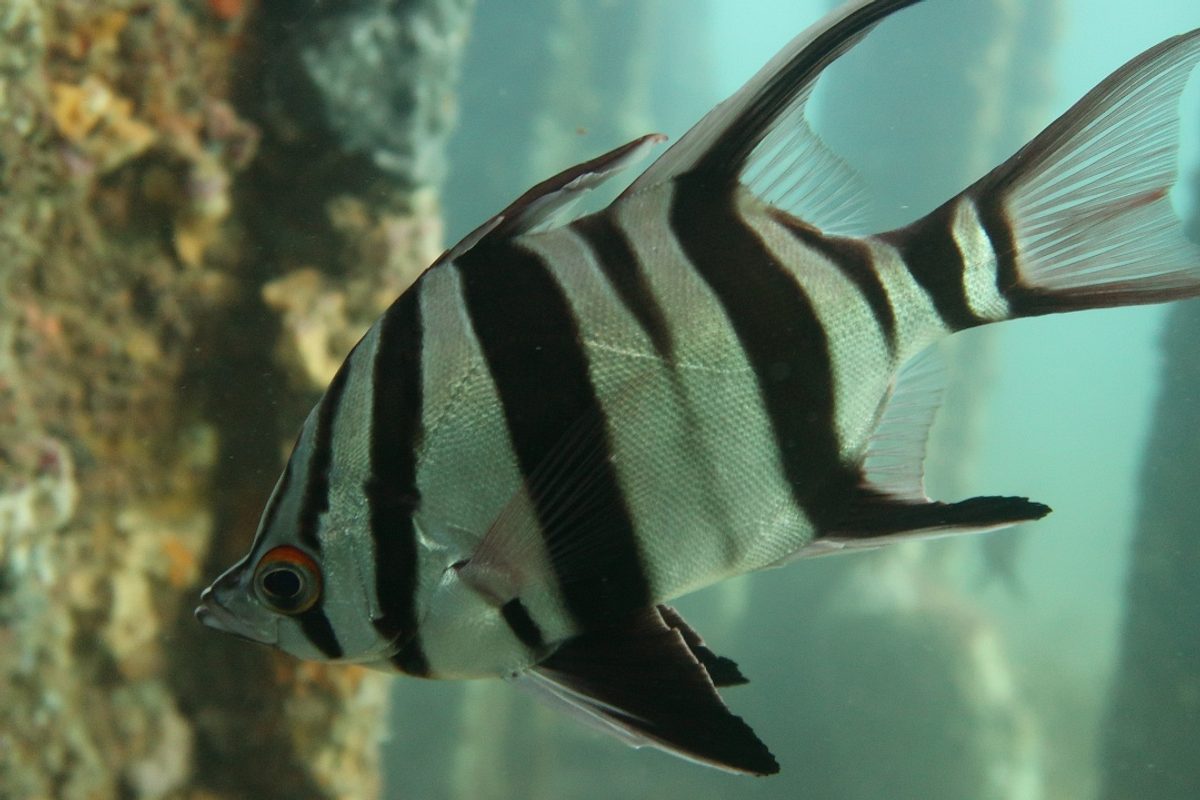
5 black-and-white fish you can see in South Australian waters
Snorkelling along South Australia’s beaches and reefs can be a lot of fun. And there’s no shortage of fishy friends to find when dipping your head underwater.
Knowing what species of fish you’re looking at can be tricky, especially when so many of them look like they’re Port Adelaide (or Collingwood!) supporters, adorned in their black-and-white guernseys.
The black-and-white brigade are a common site on our reefs and around our jetties and make for fascinating viewing.
Here’s a rundown of which fish is which, and a few features to help you tell them apart:
1. Magpie perch
Magpie perch have two thick black bands across their body. Juvenile species have a spectacular red tail that darkens as the fish matures.
This species feeds on small invertebrates.
Likelihood of seeing them: Magpie perch are the most common fish species seen on reefs during routine monitoring of SA’s marine parks. They have been observed at more than 90 per cent of monitoring sites, so you’ve got a good chance of bumping into this fish on your next snorkelling adventure.

2. Zebrafish
Zebrafish are often mistaken for the very similar luderick, but can be distinguished by their nine thick dagger-like stripes and their yellow fins.
They’re found around shallow reef structures and rock walls where they can form spectacular stripy schools of 20-30 individuals or more.
Likelihood of seeing them: Zebrafish have been seen at about 65 per cent of sites during marine park monitoring, ranking them as the 9th most common species. That’s pretty good odds of seeing these beauties.

3. Old wife
These spectacular-looking fish have two large elegant dorsal fins and black stripes of various thickness and depth.
They are very common around shallow reefs, jetty pylons and seagrass beds. They can be solitary animals or found in small groups.
If you happen to catch one of these when fishing, take care of the dorsal spines as they contain a venom. They also make a grunting sound.
Likelihood of seeing them: This species has been recorded at more than 60 per cent of marine park sites monitored.

4. Moonlighter
A member of the sweep family, moonlighters are a round-bodied species with six dark bands including one around the tail.
Juveniles are often seen on their own whereas adults are often seen in pairs.
This species is commonly seen close to reefs or near jetty pylons.
Likelihood of seeing them: Moonlighters are observed at nearly 80 per cent of sites monitored in marine parks, making them very common to see.

5. Western talma
Western talmas are part of a group referred to as butterflyfishes.
Often mistaken for moonlighters, western talmas have only five black bands, a more triangular body shape and a more prominently pointed snout.
They are often seen in pairs around sheltered reefs, jetties and seagrass beds.
Likelihood of seeing them: These are another regularly observed species, seen at about 55 per cent of marine park monitoring sites during diver surveys.

What’s with all the stripes?
While the stripy guernseys of these fish may make them look like Port Adelaide supporters, this type of pattern plays a far more important role.
Stripes can be effective at breaking up the outline of a fish, making them harder for predators to detect at a distance.
The false eyespots on the juvenile western talma and the juvenile moonlighter (pictured in the main image) are also important for preventing or misdirecting attacks from predators.
Where’s the best spot to find them?
Some of the best places to see these fish are on the reefs in the Port Noarlunga and Aldinga Sanctuary Zones. These zones are designed to protect species that inhabit SA’s reefs and are only a short drive south of Adelaide.
If you head further south towards the tip of the Fleurieu Peninsula, the Rapid Bay and Second Valley jetties and surrounding reefs are also worth a shot to see these fish. Otherwise, check out our story: 10 top spots to snorkel in South Australia for more options.
If you’re keen to learn some of the other wonderful species that you’ll see on your snorkelling or beachcombing trips, check out thesnorkellingandbeachcombingguides. And to learn more about how marine parks are monitored take a look at theresearch methods poster.
Main image: juvenile moonlighter
(All images courtesy of the Department for Environment and Water’s Marine Science team)





